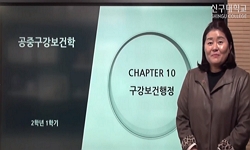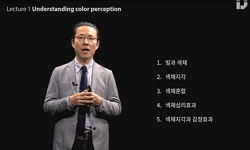This study aims to prepare the basic data of the teeth color by measuring analyze mode using the color of the maxillary anterior teeth (maxillary central incisor, lateral incisor, canine) of the college students in their twenties as the dental colorim...
http://chineseinput.net/에서 pinyin(병음)방식으로 중국어를 변환할 수 있습니다.
변환된 중국어를 복사하여 사용하시면 됩니다.
- 中文 을 입력하시려면 zhongwen을 입력하시고 space를누르시면됩니다.
- 北京 을 입력하시려면 beijing을 입력하시고 space를 누르시면 됩니다.

ShadeEye NCC를 이용한 상악전치부 색조와 구강보건 및 식습관 관련 특성 비교 = Research Articles : Oral Health and Eating Habit Attributes Relating to the Maxillary Anterior Teeth Color by Using the ShadeEye NCC
한글로보기https://www.riss.kr/link?id=A60239413
- 저자
- 발행기관
- 학술지명
- 권호사항
-
발행연도
2012
-
작성언어
-
- 주제어
-
KDC
500
-
등재정보
KCI등재
-
자료형태
학술저널
-
수록면
348-358(11쪽)
- 제공처
-
0
상세조회 -
0
다운로드
부가정보
다국어 초록 (Multilingual Abstract)
This study aims to prepare the basic data of the teeth color by measuring analyze mode using the color of the maxillary anterior teeth (maxillary central incisor, lateral incisor, canine) of the college students in their twenties as the dental colorimeter. The maxillary anterior teeth of the subjects of study as 467 students (male 89, female 378) were measured from 14 November to 2 December, 2011, so the color of total 1,401 teeth was examined, and oral health and eating habit attributes were researched. The survey results were as follows. 1. The color of maxillary anterior teeth was changed from maxillary central incisor to maxillary canine, brightness (L*) was decreased 76.79±4.86 to 69.72±4.62, red chroma (a*) was increased 2.02±2.00 to 4.10±2.60, yellow chroma (b*) was increased 15.51±3.42 to 20.10±3.46. 2. Brightness (L*) was different according to sex (p< 0.001), major (p<0.001), grade (p<0.001), smoking (p<0.001), oral health education (p<0.01), daily brushing frequency (p<0.001), brushing method (p<0.05), oral hygiene devices (p<0.001), and red chroma (a*) to major (p<0.001), daily brushing frequency (p<0.05), brushing time after meals (p<0.01), oral hygiene devices (p<0.01), and yellow chroma (b*) to brushing time after meals (p<0.01), subjective tooth color (p<0.001). 3. Brightness (L*) of eating habit attributes was different according to coke, candy (R2=0.053, p<0.05). In conclusion, this study demonstrates that the color of maxillary anterior teeth has differences in brightness (L*), red chroma (a*), yellow chroma (b*) from each tooth, also these showed various tendency according to the oral health and eating habit attributes.
동일학술지(권/호) 다른 논문
-
우식유발식품에 의한 인공타액내 pH 변화와 당 분해 효소 활성에 관한 연구
- 한국치위생과학회
- 지윤정 ( Yun Jeong Ji )
- 2012
- KCI등재
-
- 한국치위생과학회
- 황순정 ( Soon Jung Hwang )
- 2012
- KCI등재
-
Dicalcium Phosphate Dihydrate를 함유한 3.5% 과산화수소가 치아표면에 미치는 영향
- 한국치위생과학회
- 심연수 ( Youn Soo Shim )
- 2012
- KCI등재
-
- 한국치위생과학회
- 이경수 ( Kyeong Soo Lee )
- 2012
- KCI등재




 KCI
KCI KISS
KISS






